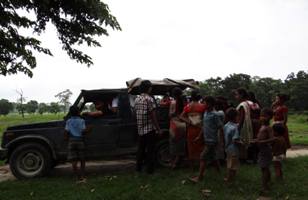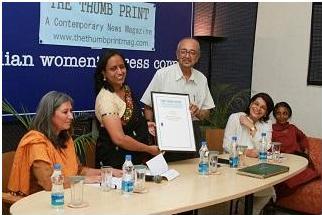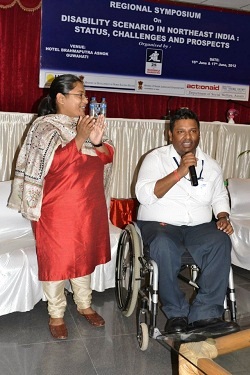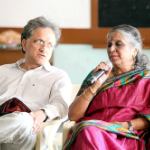Poornima died in April 2012 after giving birth to a baby on a busy street in Bangalore. Passers-by rushed the young woman to a nearby private hospital, which referred her to a government hospital, but she died on the way, presumably due to excessive bleeding. It is anybody's guess what happened to her children: last heard, the newborn was in a critical condition in the neo-natal intensive care unit of the public hospital and the two older children were "lost" in the confusion.
Poornima's death did not spark public outrage or provoke protest rallies, demonstrations or candle-light vigils - in Bangalore, let alone elsewhere in the country or the world. Nor did it merit prominent or sustained media coverage, including heated television debates, or social media campaigns. No union minister said, "Saving the life of the mother is of prime importance…" No secretary of the government (state or union) expressed "concern and angst about her untimely and tragic death." No official source deemed it "an extremely sad and unfortunate thing to happen." No one suggested that "measures be put in place to prevent similar incidents occurring in the future." Nor was even one inquiry into the circumstances of the tragedy demanded or initiated.
After all, Poornima was a poor woman, abandoned by her husband and dependent for shelter on her sister, a domestic help. And hers was merely one of the thousands of maternal deaths that take place in the country every year: 56,000 altogether or six every hour or one every ten minutes in 2010, according to estimates in a report released by several United Nations agencies and the World Bank in May 2012, less than a month after Poornima's death. Nearly one-fifth (19 per cent) of all maternal deaths across the world in 2010 occurred in India.
This is not surprising since, according to official statistics, less than half of all births in India are assisted by anyone trained in healthcare at any level: doctor, nurse, auxiliary nurse midwife (ANM), lady health visitor (LHV) or any other category of healthcare worker. Only 40 per cent of births here take place in medical institutions (of any kind) and just over a third of Indian women delivering babies receive post-natal care from trained healthcare personnel (of any sort).
Five cases of maternal death were reported in Punjab's Ferozepur district in just two months (July and August) this year, apparently due to the non-availability of medical facilities and expertise. This is despite government schemes such as the Janani Suraksha Yojna (JSY), launched specifically to check maternal mortality by providing financial assistance and encouraging institutional deliveries. According to a local doctor, the inadequate training of health workers and the pressure to meet targets are at least partly to blame for the situation. The fact that the district civil hospital does not have a gynecologist or a paediatrician in attendance - both posts have long been vacant - must surely be a significant factor, too.
The deaths of Sonia, Neelam Rani, Veerpal Kaur, Harvinder Kaur and Gurmit Kaur in Ferozepur did not quite capture media, public, political or official attention - at least at the national level. One wonders whether they made it into health statistics: India's Maternal Mortality Ratio (MMR) is currently said to be 212 (that's the number of women aged 15-49 dying due to maternal causes per 1,00,000 live births), slightly above the global average of 210. Punjab's MMR is 172. Nine states, including Assam (at 390), register MMRs higher than the national average, whereas Kerala and Tamil Nadu are doing much better at 81 and 97 respectively.
In contrast, Ireland's MMR is among the lowest in the world, ranging from one to six per cent in various estimates. It would remain so even if the highest figure was doubled to compensate for possible under-reporting (mainly due to discrepancies in definition and criteria), about which Irish experts are concerned.
Under the circumstances one can only wonder at the nerve displayed by the Indian government in dealing with the tragic case of 31-year-old Savita Halappanavar, who died on 28 October in Galway, Ireland, after doctors there refused to perform an abortion even though she was miscarrying 17 weeks into her first pregnancy. The Ministry of External Affairs summoned the Irish ambassador in New Delhi to convey India's unhappiness over "a young life coming to an untimely end." The Indian ambassador in Dublin met the Irish Deputy Prime Minister and Foreign Minister, Eamon Gilmore, besides various officials, to convey the deep concern of the Indian government and to seek an independent and transparent investigation. He is also reportedly scheduled to meet Enda Kenny, the Taoiseach or Prime Minister of Ireland, to request a public inquiry.
Earlier the Indian diplomat was quoted by The Guardian as stating that Savita may not have died if she had been treated in India. According to him hospitals in India would not have denied a miscarrying woman an abortion. This is arguably true with regard to middle or upper class, educated, urban Indian women, like Savita, with access to quality medical care.
After all, India was one of the first countries in the world to legalise induced abortion through the Medical Termination of Pregnancy Act, 1971. Considered a pioneering and fairly liberal law, the MTP Act enables women to legally avail abortion up to the 20th week if the pregnancy carries the risk of grave physical injury to the woman, endangers her mental health, has resulted from contraceptive failure (within marriage) or rape, or is likely to result in the birth of a child with physical or mental abnormalities. Significantly, no spousal consent is required under the law.
Despite the law, however, India has a disgracefully high abortion-related death rate, mainly due to the prevalence of unsafe abortions, which is clearly linked to the non-availability or lack of accessibility of safe abortion services. The country recorded 6.5 million abortions in 2008, of which two-thirds or 66% were deemed unsafe, according to figures released by the World Health Organisation along with the Guttmacher Institute earlier this year.
According to Anuradha Gupta, director of the National Rural Health Mission, abortion-related deaths (approximately 4600 annually) contribute to eight per cent of all maternal deaths in India. Studies suggest that only one trained provider of MTP services is available for a rural population of 2.24 lakh.
The work of a committee constituted in 2006 to recommend amendments to the MTP Act has reportedly been stalled over the past couple of years. Among the changes awaited is an extension of the cut-off time for the legal termination of an unwanted pregnancy to 24 weeks. Another is a proposal to permit nurses and AYUSH doctors to conduct safe abortions, besides ensuring healthy deliveries and providing appropriate contraception, after undergoing the necessary training.
The terrible loss suffered by the Yalagi and Halappanavar families cannot be wished away, even if multiple probes lead to a progressive change in the way abortion is viewed and dealt with in Ireland (as desired by many of their own citizens) and even if the bereaved husband opts for legal action to seek justice. However, if the widespread public anger and sorrow generated by Savita's untimely and probably avoidable death could be channelled into a sustained campaign to reduce the number of maternal deaths in India - abortion-related and otherwise - thousands of similar tragedies could perhaps be prevented in the country of her birth.
Find us on facebook: facebook.com/TheThumbPrintMag







































